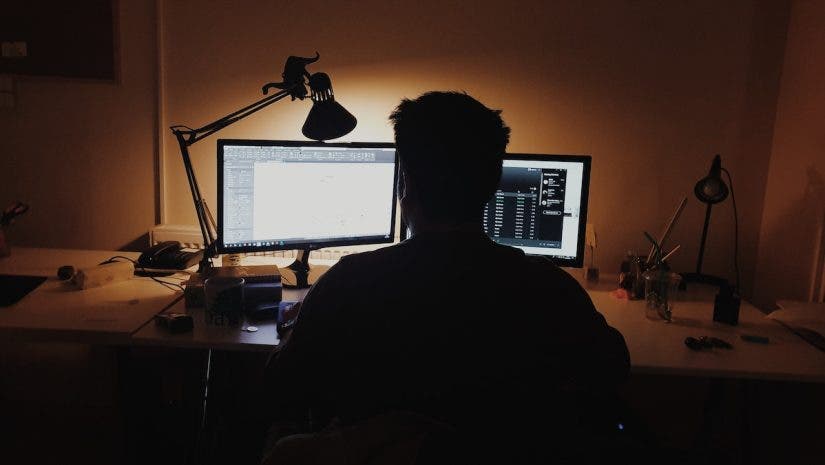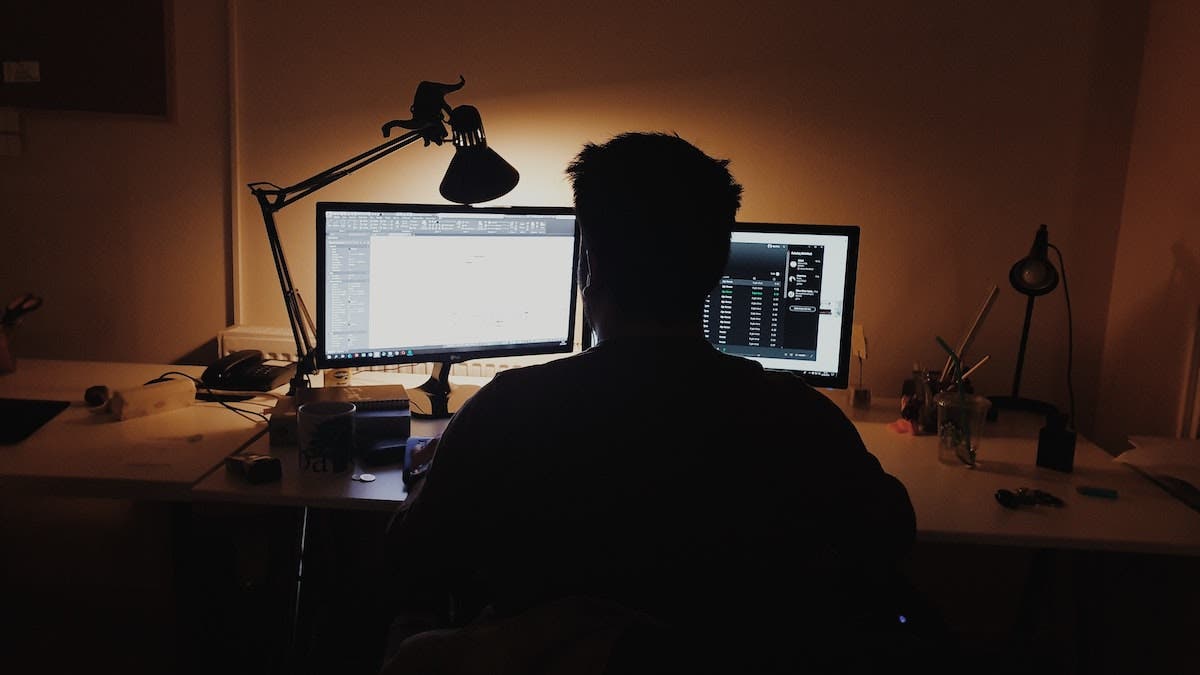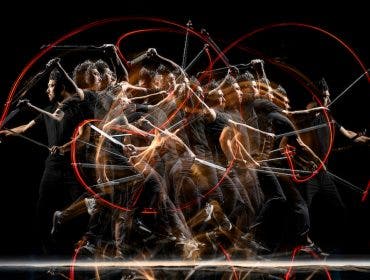In the graphic design industry, to make the most out of your creativity and produce the best possible work, you need to rely on technology. For photography, you need a high-end camera and lenses. Although, for graphic design, you need a high-end monitor and professional software. You need to be in control of each pixel and don’t leave anything to chance. The best monitors for graphic design have a good size, high resolution, and perfect color accuracy.
But how should you choose a good monitor to make sure you won’t need to change it in a year? After all, you are an artist and not an IT specialist. Don’t worry. Check out this short guide to choosing the best monitor for graphic design and make the best decision for you and your work.
Why You Need a Great Monitor
Choosing the right monitor for professional and recreational goals is about more than just finding a flashy 4K display or picking up the best budget 27 inch monitor. To stay competitive in your field, you need an accurate color gamut, built-in calibration tools, and seamless compatibility with your computer’s hardware.
As you explore monitor specs and picture quality, consider which tasks you’ll use your monitor for most, and the features you can’t afford to miss out on.
It’s Crucial For Doing The Job Right
A good monitor is an essential piece of equipment for graphic designers simply because they can’t do their job properly without it. It’s like being a software developer and not having a performing computer. The result of your work will be poor regardless of your experience, creativity, and effort.
You’ll See More Accurate Colors
A good monitor allows you to see colors accurately. It also provides a high level of detail, good contrast, consistent color management, and all the sharpness and clarity you need. Nothing is more embarrassing than delivering a design full of inconsistencies just because you couldn’t see them on your monitor. You should use a monitor with the same performance as your client’s. And if you want high-end clients, you need to use high-end technology.
You’ll Spend Less Time Reviewing Work
Another reason for investing in a good monitor is to reduce your effort and time spent checking your work. If you have a large enough monitor, you can have an overall perspective of your work, zoom in to check details, and manage your files easily. It helps keep things organized and at-hand all the time. The result is a better workflow and more time for creativity and following your passion.
How To Choose A Monitor For Graphic Design
There are monitors designed for regular use, photo editing, gaming, programming, and more. How can you choose a monitor for graphic design?
As always, we recommend you start by deciding how much you can afford to spend. For example, a beginner may not have $6,000 to invest right from the start. Fix the budget first, and then check out the following features a good monitor for graphic design must have. However, it is worth remembering that if you buy a low-quality monitor, you will likely need to replace it long before a high-quality monitor, making you spend even more money in total.
Screen Size
The size of the monitor dictates how much of your design you’ll be able to see without compromising image quality. If you must zoom in and scroll each time you want to work on details, you’ll lose a lot of time and risk creating inconsistencies and miss mistakes. Also, larger monitors have higher resolutions.
Resolution
Resolution represents the density of pixels on the screen. A 2560×1440 resolution has larger pixels than a 4K or 5K resolution. As a result, you’ll see fewer details. If you work with large designs or photos, you want at least a 4K monitor to have impeccable clarity and sharpness.
Color Accuracy
Color accuracy is crucial for graphic design. For the best color reproduction, look for monitors with factory calibration, at least Delta E <2 color accuracy (the lower the Delta E number, the higher the accuracy), 10-bit color depth, and 100% coverage of sRGB color space. Ideally, the monitor provides coverage for Adobe RGB and DCI-P3 color spaces, too.
Screen Space Management
Graphic designers need a lot of screen space to place their tools and models. A thin frame, for example, gives you more screen space. A monitor you can tilt and rotate allows you to manage the space as you like. Picture-in-picture functionality helps you work in different windows simultaneously. Look for an adjustable monitor ready to adapt to your workflow and help you improve your work.
Brightness Management
Although you want a monitor with a wide dynamic range, able to display pure black and white consistently, you also want some control over the brightness of the monitor. Spending long hours in front of the screen may damage your eyes. Working in different lighting conditions may affect the quality of your work. Look for a monitor with flicker-free technology, reflection and glare reduction, and brightness adjustments.
Connectivity
Make sure you choose a monitor that fits your computer and other devices. You don’t want a monitor you can’t use, do you? Look for HDMI, USB-C, DisplayPort, or your computer’s connections. It also helps if you can power the monitor via the computer connection and have one less cable around your workstation.
Best Monitors for Graphic Design
Not all graphic designers do the same work. Some may focus on animation. Others may use a lot of images, while others may have a versatile approach and do more than one type of graphic design. As a result, your choice should consider your realistic needs, workflow, and current hardware and software resources. Here are our choices for the best monitors for graphic design for each category of users.
Best Overall – Asus ProArt Display PA32DC
The Asus ProArt Display PA32DC features a unique benefit for any graphic designer—it’s the first OLED monitor with automatic calibration. The built-in motorized flip colorimeter provides a secondary measure for professional-grade color accuracy, so you can feel confident that what you see on screen is always true to life.
Dual-stand options help you design your perfect ergonomic workstation. Plus, if you’re ever worried about color shift from ambient lighting, you can shield your screen with the included lens hood or reposition the monitor viewing angles accordingly.
Another benefit for long graphic design sessions is Uniform Brightness function. When you’re multitasking and switching between multiple windows or programs with different contrast levels, the ProArt Display PA32DC compensates to keep brightness levels consistent for more comfortable all-day viewing.
Best Color Accuracy: BenQ PD3220U Designer Monitor
Color accuracy is key for creating artwork and 3D graphic design. If you need a reliable monitor in that department, this may be a good choice. The PD3220U is a 32-inch monitor, large enough for all your creative ideas. It provides 4K HDR10 video support and Thunderbolt™ 3 connectivity. The monitor covers 95% Display P3 and DCI-P3, 100% sRGB and Rec.709, and achieves Delta E ≤ 3 to guarantee consistent color application.
It comes pre-calibrated, is Calman Verified and Pantone Validated, and features the BenQ AQCOLOR technology for optimal color precision. The ICCsync functionality synchronizes color profiles between monitor and computer, leaving nothing else to do but find your inspiration and start to work.
Best for Mac Users: Apple Studio Display
There’s a reason Mac users prefer to keep their video-editing, graphic-design, and photo-processing equipment within the Apple product line. Mac monitors are designed for simplicity and functionality, from their impressive HDR visuals and excellent color reproduction to peripheral features like built-in speakers, high-quality webcams, and plethora of USB-C ports.
The Apple Studio Display offers a 5K, 27-inch screen featuring anti-reflective coating, 600 nits of brightness, P3 wide color, and 14.7 million pixels. You’ll love how easily it pairs with your existing MacBook Pro, MacBook Air, Mac Pro, or Mac Mini to create the workstation of your dreams.
The tilt-adjustable stand provides 30 degrees of vertical swivel movement for the perfect viewing angle. The built-in ambient light sensor automatically adjusts your display’s color temperature to better match your working environment.
Best OLED: LG UltraFine 32EP950-B OLED Monitor
OLED stands for Organic Light-Emitting Diode and is the pinnacle of image quality. So, if you want a monitor that accurately displays details and provides the best sharpness and clarity, the LG UltraFine OLED Pro may be the answer.
The LG UltraFine OLED Pro is a 32-inch monitor featuring a 3840×2160 resolution, 1M :1 contrast ratio, many connectivity options, and a tilt/height/pivot adjustable stand. It has a 10-bit color depth and covers 99% of the industry-standard DCI-P3 and Adobe RGB color spectrum. If you use Adobe software for graphic design, you will appreciate the harmonious color reproduction of the monitor. The monitor comes calibrated too.
The drawbacks are the lack of built-in speakers and the need for external power, which increases the number of cables on your desk.
Best for Photo and Design: BenQ SW321C Photo Editing Monitor
For many graphic designers, working with photos is part of their usual workflow. If you use photo editing software regularly, you may want a monitor with vibrant colors, high clarity, and exquisite details.
The SW321C is a 32-inch monitor awarded with TIPA Best Professional Photo Monitor in 2020. It provides screen-wide color accuracy and paper color sync software, includes the BenQ AQCOLOR technology, and covers 99% Adobe RGB, 100% sRGB/Rec. 709, and 95% DCI-P3/Display P3, has 10-bit color depth and Delta E ≤ 2 in Adobe RGB and sRGB color spaces. If you use Adobe software, it helps you to have a monitor with accurate colors in the Adobe RGB color space.
The monitor comes pre-calibrated and is Calman Verified and Pantone Validated. It’s designed to be stress-free and accompany you all the way, from design to retouching to printing.
Best for Gaming and Design: LG 49GR85DC-B UltraGear Gaming Monitor
If you’re into gaming, you’ve probably heard all about the immersive benefits of curved monitors and ultrawide monitors. The LG 49GR85DC-B UltraGear Gaming Monitor features an ultrawide aspect ratio of 32:9 for more enjoyable work and play.
With a 240Hz refresh rate, gamers don’t have to worry about lag or losing their edge to slow response time in the middle of the action. This LG UltraGear display can easily keep up with any graphic card. Choose from HDMI 2.1 and DisplayPort 1.4 connection points for smoother, more vivid colors and impressive performance.
Whether you’re gaming or designing, the Picture in Picture and Picture by Picture configurations let you accommodate two input sources on the same screen for a seamless user experience.
Elevate Your Workspace with a Monitor Built for Graphic Design
Whether we speak about computer monitors, PCs, photo gear, or software, finding the best tools for your craft is essential. And while the features and built quality of the product are important, it’s even more important to choose reliable products that fit your workflow and personality.You use your graphic design monitor daily to transform your creativity into reality, perfect your work, and impress clients. If they are too complicated, slow, or difficult to manage, you’ll spend more time fiddling with cables and settings than working. So, choose wisely, avoid clutter, and aim to be a sustainable artist.






